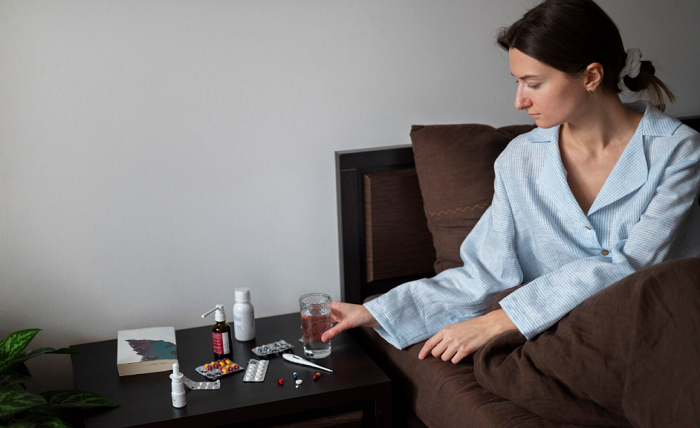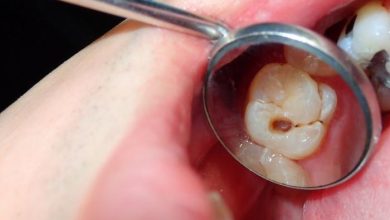
Nicotine addiction is often underestimated. While it may begin as a social habit or a way to relieve stress, it quickly rewires the brain and body, creating one of the strongest dependencies known in modern life. The journey to recovery can be difficult—but it’s absolutely achievable.
If you’ve ever tried to quit and relapsed, you’re not weak. You’re human. Nicotine addiction is a physiological and psychological condition, not a failure of willpower. Healing involves understanding your body’s chemistry, reshaping your habits, and nurturing the emotional resilience that helps you stay free.
This in-depth guide will walk you through how nicotine affects your brain, how to quit strategically, and how to heal your body and mind in the months and years that follow. Whether you’re beginning your Nicotine Addiction Recovery journey or seeking long-term tools to stay smoke-free, this guide will help you every step of the way.
Understanding Nicotine Addiction: The Science Behind Dependence
Nicotine is a psychoactive chemical found in tobacco and most vaping products. It stimulates the release of dopamine, the neurotransmitter responsible for pleasure and reward. Every puff, drag, or inhale gives your brain a mini “reward,” reinforcing the behavior.
Over time, the brain adapts—it reduces its natural dopamine production, relying instead on nicotine for that chemical hit. When you stop using it, your dopamine levels crash, leading to classic withdrawal symptoms like anxiety, irritability, restlessness, and sadness.
The Psychological Cycle of Addiction
Nicotine addiction doesn’t just live in your cells—it thrives in your routines and emotions. You may reach for a cigarette:
- When you’re stressed or anxious (to soothe discomfort)
- After meals or coffee (habit association)
- During boredom or loneliness (emotional filling)
Breaking addiction requires addressing both the biochemical dependence and the behavioral conditioning that sustains it.
Step 1: Acknowledge and Commit to the Journey
The first and most profound step is acknowledgment—recognizing that nicotine has controlled parts of your life and deciding to reclaim them.
Redefine “Quitting” as “Healing”
The word quit can sound like deprivation. Instead, think of it as healing—a return to balance, health, and freedom. You’re not losing something; you’re removing what’s been holding you back.
Identify Your Deep Motivation
Your motivation fuels every step ahead. Ask yourself:
- What am I really seeking when I smoke or vape?
- What do I hope to feel when I’m free of nicotine?
Write your answers somewhere visible. Real change starts with emotional clarity.
Step 2: Create a Personalized Quit Plan
Going cold turkey works for some people, but for many, it’s like trying to climb a mountain without equipment. A quit plan prepares you mentally, emotionally, and practically.
Choose a Quit Date
Pick a date within two weeks and mark it boldly on your calendar. Use the time before your quit date to taper down and prepare your environment.
Remove Temptations
- Dispose of cigarettes, vapes, lighters, and ashtrays.
- Clean your home, car, and clothes to remove smoke smells.
- Inform your family, friends, or coworkers about your plan—they’ll help hold you accountable.
Build Your Toolkit
Gather tools that support your quit effort:
- Nicotine replacement therapy (NRT): Patches, lozenges, or gum help manage withdrawal safely.
- Coping alternatives: Sugar-free mints, stress balls, herbal teas, or water bottles for hand-to-mouth satisfaction.
- Support resources: Join a quit program or app (try Smokefree.gov).
If you feel your addiction is deeply rooted or connected to emotional or mental health challenges, consider choosing a luxury rehab center that specializes in nicotine and behavioral addiction. These centers often provide holistic care, therapy, nutrition guidance, and a calming environment that accelerates recovery.
Step 3: Prepare for Withdrawal—Your Brain Is Rebalancing
Nicotine withdrawal isn’t a punishment—it’s your brain recalibrating its chemistry. Understanding this makes it easier to endure.
What Withdrawal Looks Like
Most symptoms peak around day 3–5 and gradually subside within 2–4 weeks. You might experience:
- Irritability and restlessness
- Fatigue or insomnia
- Increased appetite
- Cravings that come in waves
These sensations are signs that your nervous system is healing. Think of them as evidence of progress, not suffering.
Coping Strategies for Cravings
Cravings are temporary—each lasts 5–10 minutes. When they hit:
- Delay: Wait it out for 10 minutes.
- Distract: Do something active—walk, stretch, or drink water.
- Deep breathe: Inhale slowly for 4 seconds, exhale for 6.
- Decide: Revisit your motivation list and remind yourself why you’re healing.
Step 4: Support Your Body’s Physical Healing
Nicotine affects nearly every organ, but the human body is incredibly resilient. Once you stop, healing begins almost immediately.
The Body’s Recovery Timeline
- After 20 minutes: Heart rate and blood pressure drop.
- After 12 hours: Carbon monoxide clears from your bloodstream.
- After 2 weeks: Circulation and lung function begin to improve.
- After 1–9 months: Coughing decreases; your lungs regain capacity.
- After 1 year: Risk of coronary heart disease is cut in half.
Nourish and Rebuild
To help your body detox naturally:
- Hydrate deeply: Water flushes out nicotine byproducts.
- Eat antioxidant-rich foods: Berries, leafy greens, and citrus repair cellular damage.
- Exercise regularly: Even light workouts boost dopamine and reduce cravings.
- Sleep consistently: Healing requires rest—aim for 7–8 hours per night.
Step 5: Rewire Your Mind—Addressing the Psychological Addiction
Nicotine doesn’t just hook your body—it shapes your thoughts, rituals, and emotions. Healing your mind means learning to replace nicotine’s false comfort with real coping mechanisms.
Practice Mindful Awareness
Mindfulness teaches you to observe cravings instead of reacting to them. The next time you feel an urge, pause and ask:
- What emotion am I feeling right now?
- Can I sit with this discomfort for 60 seconds?
Mindfulness breaks the link between triggers and reaction. Over time, your cravings lose power.
Cognitive Behavioral Shifts
Therapies like Cognitive Behavioral Therapy (CBT) help you identify the beliefs that keep you tied to nicotine (“I can’t relax without smoking”) and replace them with new truths (“I can breathe deeply and feel calm naturally”).
You can work with a therapist or explore CBT-based quit programs such as those offered through American Lung Association’s Freedom From Smoking®.
Step 6: Build a Support Network—You’re Not Alone
One of the strongest predictors of success is social support. Recovery is easier when you’re connected.
Where to Find Support
- Friends and family: Tell them exactly how they can help (listen, distract you, celebrate wins).
- Support groups: Local or virtual groups offer shared understanding.
- Quitlines: Call 1-800-QUIT-NOW for free coaching and resources.
- Apps and communities: Digital tools track progress and offer daily encouragement.
Accountability and Encouragement
Mark your nicotine-free milestones—1 day, 1 week, 1 month—and celebrate them. Reward yourself with something meaningful: a dinner out, new fitness gear, or adding to a “freedom fund” from your saved cigarette money.
Step 7: Preventing Relapse and Staying Smoke-Free
Relapse doesn’t mean failure—it’s feedback. Many people attempt quitting multiple times before permanent recovery, but each attempt builds strength and awareness.
Recognize Early Warning Signs
- Romanticizing smoking (“Just one puff won’t hurt”)
- Spending time in high-risk environments
- Underestimating stress without coping strategies
When you notice these thoughts, intervene early: call a friend, revisit your goals, or reread your motivation list.
Reframe Setbacks as Learning
If you slip, analyze what triggered it without judgment. Was it stress, social pressure, or lack of sleep? Use that knowledge to refine your plan. Compassion, not shame, sustains long-term healing.
Step 8: Embrace Long-Term Wellness and Identity Change
When nicotine leaves your life, space opens for growth. This is your opportunity to redesign your routines, identity, and health.
Replace Old Habits with Life-Affirming Ones
- Physical: Yoga, running, or hiking to channel energy.
- Creative: Writing, painting, or music to process emotions.
- Social: Join communities aligned with your new lifestyle—fitness clubs, volunteer groups, mindfulness meetups.
Continue Growing Emotionally
Nicotine addiction often masks deeper emotions—stress, loneliness, fear. Long-term healing involves confronting and nurturing those parts of yourself through therapy, journaling, or meditation.
Protect Your Peace
Avoid unnecessary exposure to smoking environments early on, manage stress proactively, and remind yourself daily: you’ve earned this freedom.
The Deeper Meaning of Healing
Quitting nicotine is about far more than removing a chemical—it’s about reclaiming your autonomy and rediscovering your self-worth. Each craving you resist, each mindful breath you take, is a declaration: I am in control of my life again.
Recovery is not a single moment of victory—it’s a continuous practice of awareness, care, and courage. The longer you stay nicotine-free, the more your brain, body, and spirit realign with health and vitality.
Conclusion:
Healing from nicotine addiction is one of the most empowering transformations you can experience. You’ll breathe deeper, think clearer, and feel stronger. The cravings fade, your energy returns, and a sense of calm confidence takes their place.
Remember, it’s not about perfection—it’s about persistence. Each day without nicotine is proof that you’re healing, growing, and reclaiming your best self.





